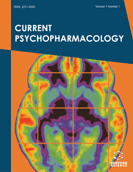Abstract
Background: Attention-deficit/hyperactivity disorder (ADHD) is a widespread diagnosis that affects many children and adolescents’ ability to function and succeed in academics, socially, or other situations. Non-stimulant medications have become widely utilized in this population, especially in stimulant-resistant individuals, whether due to poor efficacy or intolerance of side effects. However, these, too, harbor their own side effect profiles, including cardiovascular and sleep or energy level disturbances.
Objectives: We review the literature in discussion of the presentation and management of these adverse events for non-stimulant medications for ADHD, with a particular focus on atomoxetine and alpha agonists guanfacine and clonidine.
Conclusion: Non-stimulants are for the most part well tolerated but monitoring for cardiac and sleep difficulty is warranted.
Keywords: Mental health, children and adolescents, psychopharmacology, ADHD, attention deficit disorder, atomoxetine, alpha agonists.
Graphical Abstract
Current Psychopharmacology
Title:Adverse Effects of Non-Stimulant ADHD Drugs: Atomoxetine, Alpha-Agonists
Volume: 7
Author(s): Myrtha Gregoire-Bottex*Katherine Soe
Affiliation:
- Department of Pediatrics and Adolescent Medicine, Western Michigan University, Homer Stryker M.D. School of Medicine, 1000 Oakland Drive, Kalamazoo, Michigan, MI,United States
Keywords: Mental health, children and adolescents, psychopharmacology, ADHD, attention deficit disorder, atomoxetine, alpha agonists.
Abstract: Background: Attention-deficit/hyperactivity disorder (ADHD) is a widespread diagnosis that affects many children and adolescents’ ability to function and succeed in academics, socially, or other situations. Non-stimulant medications have become widely utilized in this population, especially in stimulant-resistant individuals, whether due to poor efficacy or intolerance of side effects. However, these, too, harbor their own side effect profiles, including cardiovascular and sleep or energy level disturbances.
Objectives: We review the literature in discussion of the presentation and management of these adverse events for non-stimulant medications for ADHD, with a particular focus on atomoxetine and alpha agonists guanfacine and clonidine.
Conclusion: Non-stimulants are for the most part well tolerated but monitoring for cardiac and sleep difficulty is warranted.
Export Options
About this article
Cite this article as:
Gregoire-Bottex Myrtha *, Soe Katherine , Adverse Effects of Non-Stimulant ADHD Drugs: Atomoxetine, Alpha-Agonists, Current Psychopharmacology 2018; 7 (1) . https://dx.doi.org/10.2174/2211556007666180328150248
| DOI https://dx.doi.org/10.2174/2211556007666180328150248 |
Print ISSN 2211-5560 |
| Publisher Name Bentham Science Publisher |
Online ISSN 2211-5579 |
 34
34 10
10 2
2 1
1
- Author Guidelines
- Bentham Author Support Services (BASS)
- Graphical Abstracts
- Fabricating and Stating False Information
- Research Misconduct
- Post Publication Discussions and Corrections
- Publishing Ethics and Rectitude
- Increase Visibility of Your Article
- Archiving Policies
- Peer Review Workflow
- Order Your Article Before Print
- Promote Your Article
- Manuscript Transfer Facility
- Editorial Policies
- Allegations from Whistleblowers
- Announcements
Related Articles
-
The Physiology of Learning and Memory: Role of Peptides and Stress
Current Protein & Peptide Science Small Heat Shock Proteins (sHSPs) As Potential Drug Targets
Current Pharmaceutical Biotechnology Combined Transcriptomic and Proteomic Analyses of Cerebral Frontal Lobe Tissue Identified RNA Metabolism Dysregulation as One Potential Pathogenic Mechanism in Cerebral Autosomal Dominant Arteriopathy with Subcortical Infarcts and Leukoencephalopathy (CADASIL)
Current Neurovascular Research Obesity as a Model of Premature Immunosenescence
Current Immunology Reviews (Discontinued) Biomedical Devices for Pathogen Detection Using Microfluidic Chips
Current Proteomics Unsuspected Intrinsic Property of Melanin to Dissociate Water Can Be Used for the Treatment of CNS Diseases
CNS & Neurological Disorders - Drug Targets Review: 5-HT1, 5-HT2, 5-HT3 and 5-HT7 Receptors and their Role in the Modulation of Pain Response in the Central Nervous System
Current Neuropharmacology Real-Time Location, Position and Motion Data for Healthcare Information Systems – A Patent Review
Recent Advances in Communications and Networking Technology (Discontinued) Tuberculous Lymphadenitis in Southern Italy: Clinical Aspects and Treatment Perspectives
Anti-Infective Agents Metabolic Syndrome and Psychiatric Practice: Clinical and Management Issues
Current Psychiatry Reviews N-acetyl-cysteine in Schizophrenia: Potential Role on the Sensitive Cysteine Proteome
Current Medicinal Chemistry Schizophrenia Patient Shows a Rare Interleukin 15 Receptor alpha Variant Disrupting Signal Transduction
Current Molecular Medicine Peptides As Therapeutics with Enhanced Bioactivity
Current Medicinal Chemistry Roles of Arterial Baroreceptor Reflex During Bezold-Jarisch Reflex
Current Cardiology Reviews Targeting DNA G-Quadruplex Structures with Peptide Nucleic Acids
Current Pharmaceutical Design VCP/p97/Cdc48, A Linking of Protein Homeostasis and Cancer Therapy
Current Molecular Medicine Pulmonary Rehabilitation in COVID-19: The Contribution of other Chronic Lung Syndromes for the Intervention of a Novel Disease
Current Respiratory Medicine Reviews Exploring the Anti-Neuroinflammatory Potential of Steroid and Terpenoid-Derived Phytochemicals to Combat Alzheimer's Disease
Current Pharmaceutical Design Current Pharmaceutical Aspects of Synthetic Quinoline Derivatives
Mini-Reviews in Medicinal Chemistry Recent Insights on the Pro-Apoptotic Phenotype Elicited by Presenilin 2 and its Caspase and Presenilinase-Derived Fragments
Current Alzheimer Research


























